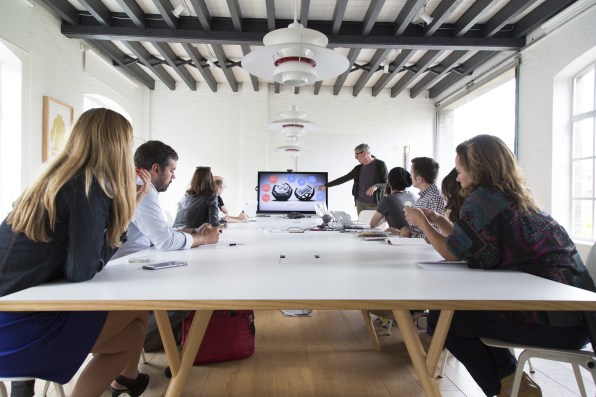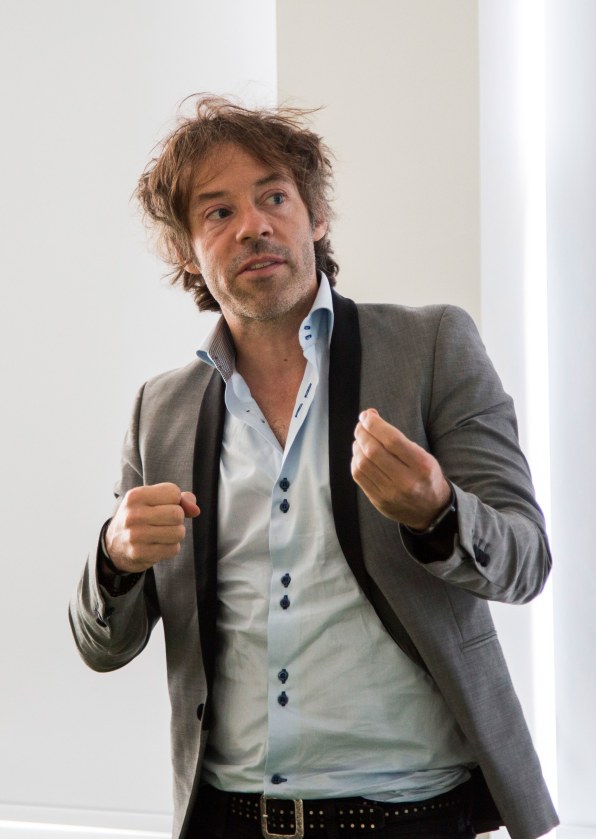Practice as Research Approaches to Creative Arts Enquiry
The ball is alive. At least, it looks and sounds alive. It responds to touch by lighting up, changing colors, beeping, buzzing, or, um, making fart sounds. (It's for 6- to 10-year-olds, after all.) As part of our recent deep dive into London's fast-growing Silicon Roundabout, we're at the innovation accelerator Made By Many, passing around its soon-to-be-released Hackaball, a "smart ball" that teaches kids the basics of programming and game design through physical play. "It's not a toy," William Owen, a founding partner and the strategic director at Made by Many, tell us. "It's a computer you can throw."
In case you're new to our #LetItFly adventure, Fast Company/Virgin Atlantic chose five winners for an all-expenses-paid trip to London to meet the creative geniuses behind some of the hottest tech companies in one of the hottest tech cities right now. One theme that our creativity scouts (meet them here) encounter is how a company's fortunes are often tied to its ability to adapt–and adapt quickly. Technology today is a bit like a hard rubber ball in motion: it changes direction in an instant and bounces out of reach if you don't stay on your toes.

Which brings us to Hackaball. The ball consists of a small computer (and a gyroscope and an accelerometer) encased in a shock-absorbent plastic shell the size of a grapefruit, all wrapped in a soft, alluring silicone mesh. Using a companion iPad app, you program how Hackaball, originally dubbed "Rule Ball," responds to various actions, such as shaking, throwing, and bouncing, with sound, light, or vibration. You choose an existing game in the app or create—that is, hack—your own, as straight-forward as hot potato or something with more elaborate rules.
Marry freedom and practicality
The story of Hackaball's inception epitomizes Made by Many's philosophy and offers some incisive lessons on managing creativity. The ball began as a side project. Unlike commissioned work, it didn't have a well-defined goal and a specific timeline. This was an experiment, but not a completely random one. Made by Many balances the competing needs for creative freedom and for results with what Owen calls, "directed side projects." Meaning, they steer a bit before unleashing the developers. "We look at what tech we need to get a grip on and help our clients with," he says of the firm's side-project strategy.
The challenge, Owen says, is understanding when the experiment has served it purpose and calling it a day, rather than letting a project go on, draining resources. It's a critical call for a small operation. At the same time, you have to be able to identify the exception to the rule.
"Hackaball is the side project that wouldn't die," Owen says. The programmable ball got more interesting with each iteration, morphing into the firm's first independent hardware product. Made by Many found a manufacturer in China, managed the software and hardware development, tested features with children, launched a Kickstarter campaign ($241,000 in pledges so far), and is working with U.K. and U.S. schools to incorporate Hackaball into the curricula—all of which gave the firm valuable new skills.
As an innovation accelerator, Made by Many also aims to make other companies more adaptable. When it created Composed, Universal Music Group's new classical music streaming app, it hosted the label's tech team for six months. Rather than simply handing off the product, Made by Many wanted to ensure that it would thrive once the label's team relocated back to Universal. As the label's first direct-to-consumer streaming service (U.K.-only for now), Composed represents a significant cultural shift. "We made the streaming service and we made the team," says Owen. "As a consulting company, we have clients doing things they haven't done before. You go into the project with the expectation of organizational change."
Trend-spotting as kids' play
Perhaps the only thing more volatile than tech trends is children's taste, which is what Michael Acton Smith, the founder, chairman, and creative director of Mind Candy, tells us at our next Silicon Roundabout stop. The entertainment company caught both waves several years ago with its massive hit Moshi Monsters. In 2012, the online game, featuring Beau Squiddly, Roy G. Biv, and other playful characters, boasted nearly 80 million users. With trading cards, plush toys, video games, and albums, Moshi became one of the most licensed brands in the U.K.
"There's nothing more viral in the world than kids discovering something in the digital space," Acton Smith says. "But just as quickly, they can decide it's uncool and move on to the next hot thing." In Moshi's case, children moved on to different toys as well as to a different platform: mobile.

As revenue from Moshi declines, Mind Candy is focused on its new franchise, World of Warriors ("It's Game of Thrones meets Pokemon," Acton Smith says), while simultaneously learning the mobile space. The game, which launched in December, has more than 5 million downloads. "It's much harder than the Web era or the TV era," he says. "As soon as kids are 7 or 8 now, they get a touchscreen and they want to play what the adults are playing, Candy Crush, not what's in the kids' space. That's a big change."
Another new product from Mind Candy, PopJam, is an online social platform. Think Instagram for kids. "We know how creative kids are," says Acton Smith. "We've gotten artwork and hundreds of stories related to Moshi, so we thought, What if we offered them a platform to share drawings, animation, text to create posters?"
For now, the PopJam app, currently in beta, is available only in the U.K. Children share their work, "like" each other's creations, and comment—150,000 comments a day so far. Already, the platform offers Mind Candy a highly useful tool for a tech company: a window into kids' changing attitudes toward products, toys, music, you name it. "They're the ultimate early adopters," Acton Smith says. "We ignore them at our peril."
In the next and final dispatch from London, we'll wrap up our adventure with a look at what makes Silicon Roundabout distinctive and share some closing thoughts.
To read more coverage of the Fast Company/Virgin Atlantic #LetItFly creativity tour, go here.
Chuck Salter for FastCo Works, Fast Company's content studio.
Practice as Research Approaches to Creative Arts Enquiry
Source: https://www.fastcompany.com/3048718/the-art-of-creative-evolution
0 Response to "Practice as Research Approaches to Creative Arts Enquiry"
Post a Comment